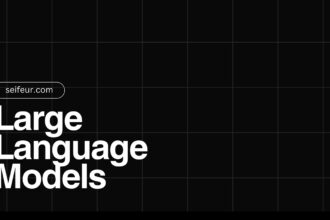Retrieval Augmented Generation (RAG) improves large language models (LLMs) by dynamically retrieving external, up-to-date information to complement the model’s knowledge, whereas fine tuning modifies the LLM itself to specialize in a specific domain.
Table of Contents
ToggleWhat is RAG?
RAG integrates a retrieval system with a language generation model. When a question arises, it first searches an external database or sources for related, recent information. This retrieved data is combined with the user’s query and passed as input to the LLM, which then generates an answer enriched by both its pre-trained knowledge and supplemented facts.
What is Fine Tuning?
Fine tuning adjusts the LLM by training it further on labeled, domain-specific data. This process embeds specialized knowledge directly into the model’s weights, resulting in a smaller, more expert model optimized for particular tasks or industries like law, finance, or healthcare.
Technical Differences
- RAG keeps the base model unchanged and augments it with external data retrieval, avoiding retraining.
- Fine tuning refines the model parameters with domain data, requiring additional training and computational resources.
Advantages Comparison
| Aspect | RAG | Fine Tuning |
|---|---|---|
| Data Recency | Accesses real-time or updated external data dynamically | Knowledge fixed to training cutoff; no real-time updates |
| Model Modification | No changes to the base LLM needed | Requires retraining and tuning the model |
| Cost | Lower deployment cost; maintenance of retrieval system needed | Higher training cost; deployment is efficient once done |
| Accuracy in Domains | Good for broad queries; less domain specialized | High accuracy and consistency in specific fields |
| Latency | Higher due to retrieval time | Lower with direct generation |
Challenges
- RAG needs efficient retrieval systems and can suffer delayed responses due to data fetching.
- Fine tuning demands quality annotated data and substantial compute, with static knowledge until re-trained.
When to Use Which?
- RAG fits scenarios requiring access to the latest data, such as news, customer support, and dynamic content.
- Fine tuning suits stable domains needing expert-level consistency, like legal document analysis or medical diagnostics.
Combining RAG and Fine Tuning
Organizations can first fine tune models for domain expertise and then use RAG to layer in fresh, relevant data. This hybrid approach balances deep specialization with up-to-date accuracy, ideal for fast-moving fields requiring expert knowledge plus recent facts.
Key Takeaways
- RAG boosts LLMs with timely, external data without retraining the model.
- Fine tuning specializes LLMs by embedding domain expertise into the model.
- RAG is better for dynamic info needs; fine tuning favors static, highly specialized tasks.
- Costs, latency, and maintenance differ significantly between the two methods.
- Combining both approaches can deliver optimal real-time accuracy and domain precision.
RAG vs LLM: Which Boosts Your Language Model Better?
If you’re diving into enhancing Large Language Models (LLMs), the question “RAG vs LLM” essentially boils down to whether you should adopt Retrieval Augmented Generation (RAG) or Fine Tuning. The direct answer? Each has its strengths and weaknesses, and often the best results come when you blend them.
But let’s chew through this juicy topic step-by-step.
Why Even Bother Enhancing LLMs?
Large Language Models amaze us with their natural language skills. Yet, they have a blind spot: knowledge cutoff. They stop learning at their last training date. So if the latest big event or a niche professional detail popped up after that, the model’s answers can be outdated or plain wrong.
Imagine asking a model about the Euro 2024 results without recent info. Without updates, it might hallucinate wildly, claiming Belgium won when the real winner was Germany. That’s where RAG and Fine Tuning shine.
RAG (Retrieval Augmented Generation) in a Nutshell
RAG is like a smart librarian who doesn’t just rely on memory but fetches the latest books when you ask a question. It retrieves up-to-date info from external databases or the web and combines this “fresh” data with the model’s own knowledge to generate answers.
- No need to tweak the model itself.
- Dynamic updates guaranteed since the library (knowledge base) is constantly refreshed.
- Reduced risk of hallucination, since answers come backed by real sources.
One catch? This retrieval step can slow down responses and requires maintaining a reliable search system. Still, for real-time queries — think customer service bots needing the latest product info or news feeds — RAG rocks.
Fine Tuning: Making Your LLM an Expert
Fine Tuning molds the model’s internal DNA, teaching it specific vocabularies, formats, and logic of a niche field like law, finance, or medicine. You feed it labeled data relevant to your domain, and it “re-trains” on this to specialize the model.
- Incorporates knowledge directly into model weights.
- Drastically improves accuracy on particular domains.
- Allows consistent tone and style adjustment for professionalism.
- Faster inference — no external info to fetch.
However, this process is resource hungry and static. Since you can’t retrain every day, new developments remain invisible until the next tune-up.
Head-to-Head: RAG vs Fine Tuning
| Feature | RAG | Fine Tuning |
|---|---|---|
| Update ability | Access to real-time, dynamic data | Static, based on training cutoff |
| Accuracy | Good for broad queries, limited deep domain expertise | High in specialized fields |
| Latency | Slower due to retrieval step | Quick, no external calls |
| Costs & Resources | Lower deployment cost but higher maintenance for data sources | High initial tuning costs; cheaper during runtime |
| Ideal for | Dynamic environments needing current info | Specialized, stable domains |
When to Choose RAG?
Use RAG if your application demands up-to-the-minute info:
- Customer service bots resolving queries with latest product details
- News summarization or financial market analysis requiring fresh data
- Healthcare or legal apps needing accurate citations from up-to-date sources
It handles volatile topics well, but expect a little overhead in maintaining retrieval systems and some delays fetching info.
Fine Tuning—Is It Your Domain Expert?
If you need unwavering expertise and consistency in complex fields, go fine tuning:
- Stable domains like legal contracts or internal company policies
- Medical diagnosis or financial risk modeling requiring precise jargon and reasoning
- Customizing model personality or tone tightly bound to your brand
Though costly and resource-heavy, you get a model that “speaks your language” fluently and reliably every time.
Why Not Both?
The magic key may lie in combining RAG and Fine Tuning. First, fine tune your model to master your niche’s grammar and logic. Then, plug in RAG to cover the last mile — fetching the latest data beyond training scope.
This combo is ideal for fast-changing, high-stakes fields like financial news or medical research, where both domain precision and live updates matter.
Developers term this combined approach RAF. It’s like having a specialist librarian who’s not only expertly trained but also always up-to-date.
Practical Recommendations
- Assess your data freshness needs: If you require real-time info, RAG is essential.
- Consider your budget and resources: Fine tuning needs more upfront investment.
- Evaluate your domain: High-specialty domains lean towards fine tuning.
- For dynamic and complex queries, combine both techniques.
- Remember, model size and prompt length matter too—RAG must manage prompt context carefully.
Wrapping It Up
RAG vs Fine Tuning is not a rivalry but a strategic choice. RAG excels at fast, flexible updates leveraging external info, while fine tuning deepens a model’s built-in expertise for specific tasks. Ideally, businesses and developers blend these strengths to build AI systems that deliver both accurate and timely responses.
In a world where information changes in milliseconds, and specialized knowledge constantly evolves, knowing when and how to use RAG or Fine Tuning—or both—empowers you to build smarter, more reliable AI assistants.
So next time you ponder “Should I choose RAG or fine tuning for my LLM?” remember: it’s not just about choosing sides. It’s about crafting the right tool for your unique AI journey.
What is the main difference between RAG and Fine Tuning?
RAG retrieves and integrates up-to-date external data when generating answers, while Fine Tuning adjusts the model’s internal weights using labeled data to specialize it for specific tasks or domains.
When is RAG more suitable than Fine Tuning?
RAG fits dynamic environments needing real-time data, like customer service or news updates, since it can access the latest info without retraining the model.
What advantages does Fine Tuning offer over RAG?
Fine Tuning yields deep domain specialization, improves response consistency, and reduces inference cost by embedding knowledge inside the model, ideal for stable, professional fields like legal or medical.
What are the main challenges in using RAG?
RAG requires maintaining a retrieval system, dealing with possible latency from fetching data, and depends heavily on the quality and freshness of external knowledge sources.
Can RAG and Fine Tuning be combined?
Yes. Combining Fine Tuning for domain expertise with RAG for fresh data offers comprehensive solutions, useful in cases like financial alerts or medical research needing both accuracy and timeliness.
How does RAG help prevent hallucinations in large language models?
By incorporating actual external documents for each query, RAG grounds model responses in verified data, reducing hallucinated or outdated answers common in static pretrained models.



